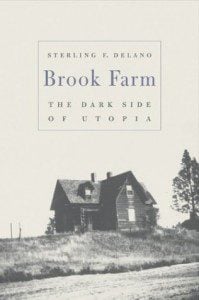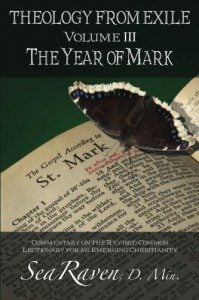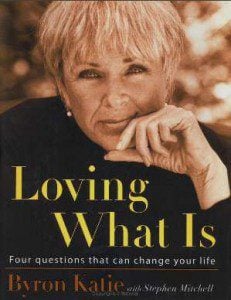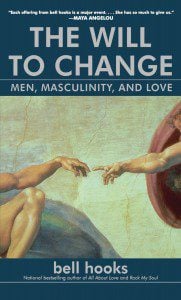Note: I previously posted this lectionary commentary in 2011, when this same passage was the Gospel Lesson. I offer it again for those who may find it newly useful or who may have missed it the first time.
Part I: Floating on the Surface: the immediate context of Nicodemus and John 3:14
One reason “born again” Christians made John 3:16 famous is its proximity to the story of Jesus telling Nicodemus that “no one can see the kingdom of God without being born again.” To complicate matters, many translators argue that “born again” is not the best English equivalent of the Greek. In the New Revised Standard Version, the phrase is rendered “born from above” or “born anew.” So perhaps we should start speaking of “born from above” Christians, but I doubt that slogan will catch on.
Many Christians, if reminded of the Nicodemus story, will recall being told at some point that this dialogue is the origin of the phrase “born again.” If pressed, they may also remember that one of the reasons John 3:16 is popular with “born again” Christians is that it follows almost immediately after the Nicodemus story in John 3:1-10. However, many of these same Christians find the middle verses between the Nicodemus story and John 3:16 much less familiar, especially verses 14-15: “Just as Moses lifted up the serpent in the wilderness, so must the Son of Man be lifted up that whoever believes in him may have eternal life.”
Toward the middle of my first semester of Greek, our professor asked us to make an original translation of John 3:16 as if we didn’t were unfamiliar with the famous verse. We quickly saw the point of the assignment. The very first word of John 3:16 in Greek is outos. In the vast majority of English Bibles, this word is translated as “so,” as in “God so loved the world.” The problem is that many of us hear that “so” in the wrong way. We hear it in terms of degree: “God didn’t just love the world; God loved the world a LOT.” But that’s not the way John meant it. Another meaning of the English word “so” is the sense of “in this way” or “in this manner.” Try to hear the “so” in that sense: “God so loved the world. God loved the world in this way. God so loved the world. God loved the world in this manner.” You can see this understanding represented in a handful of recent versions that have resisted the influence of traditional translations like the King James Bible. It is difficult sometimes for translation committees to agree to change the wording of well-known verses, but sometimes it happens:
- The Holman Christian Standard Bible says, “For God loved the world in this way.”
- The New English Translation: “For this is the way God loved the world.”
- The New Jerusalem Bible: “For this is how God loved the world.”
The Gospel writer is talking about the way God loved the world, which points us back to verse 14. Suddenly that Moses and the snake stuff makes more sense. God loved the world in this way: God lifted up Jesus in the same manner that Moses lifted up the serpent in the wilderness — at least according to the theology of the Gospel of John.
Part II: Diving Deeper: the background of Moses lifting up the snake in Number 21:4-9
In Numbers 21 — which includes the story of Moses lifting up the snake — the Israelites are wandering in the wilderness following the Exodus from Egypt. And they are growing impatient with year after year of hiking around the Sinai Peninsula. They don’t like the food and there’s not enough water. And in one of those classic Hebrew Bible moments, God responds to their complaints by sending “poisonous serpents among the people.” It’s kind of like treating a broken arm by smashing the patient’s toe with a hammer. Your arm may not feel better, but you’re too busy screaming about your toe to complain about your arm.
In this case, all those poisonous serpents biting people, gave the Israelites some perspective. They stopped complaining about the quality of the food, and started praying for God to contain the snakes. In response God told Moses to “‘Make a poisonous serpent, and set it on a pole; and everyone who is bitten shall look at it and live.’ So Moses made a serpent of bronze, and put it upon a pole; and whenever a serpent bit someone, that person would look at the serpent of bronze and live.” That is the immediate background the writer of the Gospel of John has in mind: just as Moses lifted up a bronze serpent to cure people bitten by the snakes, so God lifted up Jesus “that everyone who believes in him may not perish but may have eternal life.” But we can dive deeper still past the surface of John 3:16 in our search for the rest of the story.
Part III: Pushing off from the Bottom of the Pool: reading John 3:16 through the lens of 2 Kings 18:4
In 2 Kings 18, Hezekiah has just become the ruler of the southern kingdom of Judah. He was twenty-five at the time, and reigned for twenty-nine years. At least according the writer of Kings, Hezekiah, “did what was right in the sight of the Lord.” What matters in regard to this week’s Gospel lesson is the specific acts that he did that the book of Kings deems “right in the sight of God.” In the first part of verse four, we learn that Hezekiah, “Removed the high places, broke down the pillars, and cut down the sacred pole.” The high places, pillars, and sacred pole are all associated with idolatry — worshipping gods other than Yahweh.
But it is the second part of verse four that is particularly relevant: “[Hezekiah] broke in pieces the bronze serpent that Moses had made, for until those days the people of Israel had made offerings to it.” Apparently, the bronze serpent that Moses lifted up in the wilderness (or a convincing facsimile) was kept in the Temple as a relic. Over time, people had begun to worship Moses’ bronze serpent as an idol. Just as the people of Israel had found healing from venomous snake bites in the wilderness by looking at Moses’ bronze serpent, hundreds of years later, some Judeans hoped to find healing from the bronze serpent displayed in the Temple.
Ironically, the bronze serpent had originally been built to remind the Israelites to trust God, to look to God for healing and salvation — to stop complaining about minor inconveniences like food quality and to be grateful for major events like freedom from oppression. In Hezekiah’s day that same bronze serpent had become an end in itself. Judeans were worshiping the snake instead of the God to whom the statue pointed. So, that idol-smashing King Hezekiah “broke in pieces the bronze serpent that Moses had made.”
Now, having dove past the surface of John 3:16, past Numbers, and, deeper still, to 2 Kings, we are ready to push off back to the surface, returning full circle to John 3, bringing with us what we have learned along the way. The writer of the Gospel of John finds healing in Jesus being lifted up on the cross — just as the Israelites found healing in Moses lifting up the serpent in the wilderness. But in 2 Kings we see how the symbol of the serpent has hardened. It no longer points beyond itself to God. Instead it has become a simplistic formula: if you want to be healed, go visit the bronze snake in the Temple. But God cannot be reduced to a formula.
Today, for many Christians, John 3:16 has become this same sort of gimmick: read this verse and you’re saved. Done and done. But God cannot be reduced to a formula — neither can the way of God, revealed in the life of Jesus. And just as in Hezekiah’s day, the idol of John 3:16 needs to be broken. Like the bronze serpent in Hezekiah’s day, John 3:16 alone is an insufficient guide for healing and salvation. Instead, we need an authentic encounter with the Mysterious, Loving, and Gracious Presence that we call God — and concrete steps transforming one’s life to follow the way of Jesus.
Another pitfall of taking John 3:16 out of context is that it concentrates almost exclusively on Jesus’ death, Jesus being “lifted up” on the cross. Just as Hezekiah rightly smashed Moses’ serpent when it became an idol, an end in itself, we are in danger today if verses like John 3:16 lead us to focus exclusively on Jesus’ death to the exclusion of patterning our lives after Jesus’ life. Just as it is not enough to visit a sanctuary and pay homage to a relic (like a cross on a wall), it is insufficient to admire Jesus’ death while ignoring life, especially his call to “take up your cross and follow me” (Mark 8:34).
Conclusion: Micah 6:8 vs. John 3:16
Some Christians have called John 3:16 “the Gospel in a nutshell,” but John 3:16 is not enough to form a fully mature Christian life. For a touchstone verse, I would look instead to passages in the Hebrew Bible such as Micah 6:8, which has been called a “summary of the prophets.” It says, “God has told you, O mortal, what is good; and what does God require of you but to do justice, and to love kindness, and to walk humbly with your God?” Or, I would look to passage in the Gospels such as Jesus’ own summary that all the law and the prophets hang on the two Greatest Commandments to “love the Lord your God with all your heart, and with all your soul, and with all your mind, and with all your strength” and to “love your neighbor as yourself” (Mark 12:28-31).
In our modern day wilderness we can lift up Micah 6:8 and the two Greatest Commandments as a source of healing. May these slogans never become for us an idol because it not enough to believe with our lips that salvation comes from doing justice, loving kindness, and walking humbly with God — and from loving God and neighbor. We must live in such a manner everyday. May we learn to love the world in this way — as God so loves the world.
The Rev. Carl Gregg is the pastor of Broadview Church in Chesapeake Beach, Maryland. Follow him on Facebook (facebook.com/carlgregg) and Twitter (@carlgregg).












